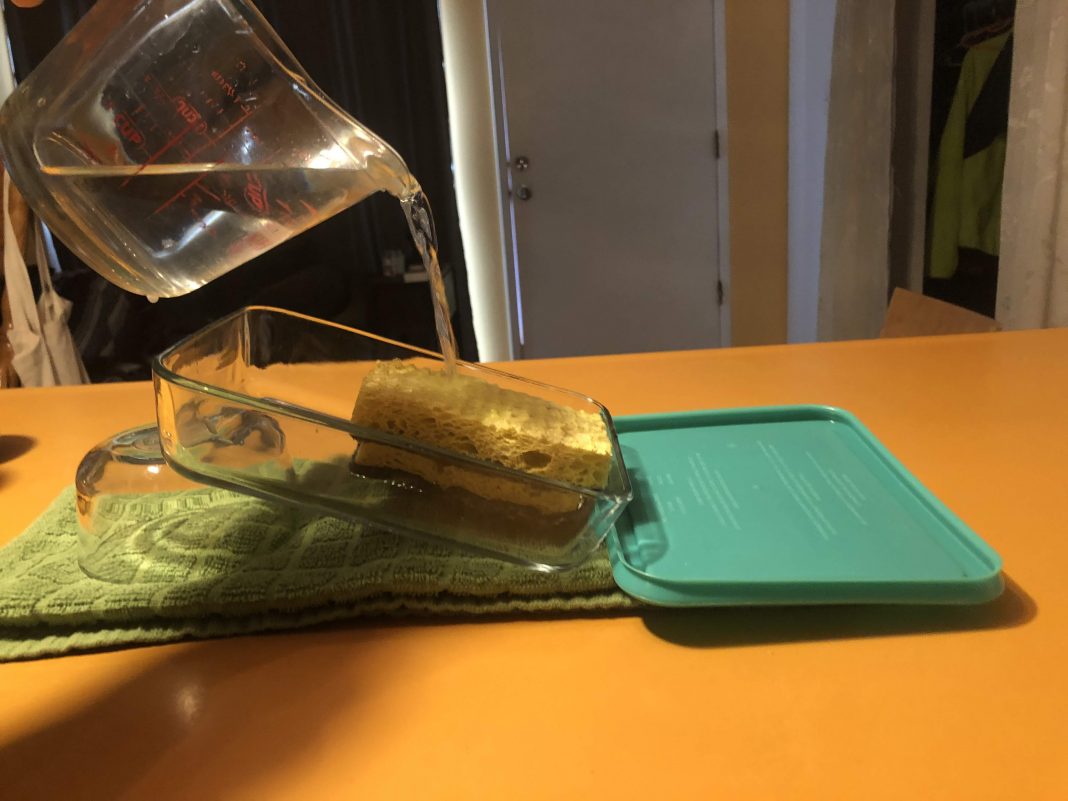Submitted by South Sound GREEN
In the face of COVID-19 and recent stay at home order, parents and guardians may find themselves looking for activities that not only keep students engaged, but also provide information about local environmental science and concerns. In our South Sound GREEN Home Watershed Activities series, we will introduce and demonstrate various hands-on and at-home activities for children of all ages to do either indoors or outside!
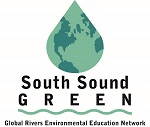 This project is a Runoff Race that uses household items to explore how water moves over different types of surfaces and why natural areas are important for keeping our waterways clean.
This project is a Runoff Race that uses household items to explore how water moves over different types of surfaces and why natural areas are important for keeping our waterways clean.
Runoff Race
Grade level: K-5
Materials
- Shallow dish (Tupperware, Pyrex, etc.) that can be propped at an angle
- “Surface materials” – these can be anything that you don’t mind getting wet. Examples – dried rice, beans, sponges, cardboard, coffee grounds, paper, flour, towels, etc. Get creative!
- Water
- Timer (optional)
Background Information
Runoff is defined as water, often from rain or melting snow, that collects and moves over a surface. The amount of runoff that occurs will depend on what type of surface the water is moving over. Having a porous surface, or one that has lots of holes and empty spaces, will allow water to pass through instead of run over, which reduces runoff. This is called infiltration, and is often associated with forests, grassy areas and gravel beds. Non-porous surfaces, such as pavement, will not absorb much water and runoff will be high.
In this activity, you will use materials from your home to create your own surfaces and test how fast water either runs off or infiltrates. Young scientists might need an adult’s help to organize their materials, while upper elementary and middle school students should be able to complete this activity on their own.
Here’s the Procedure
- Set up your dish, as well as something beneath your dish to catch water. Here, I’m using a towel and a Pyrex lid.
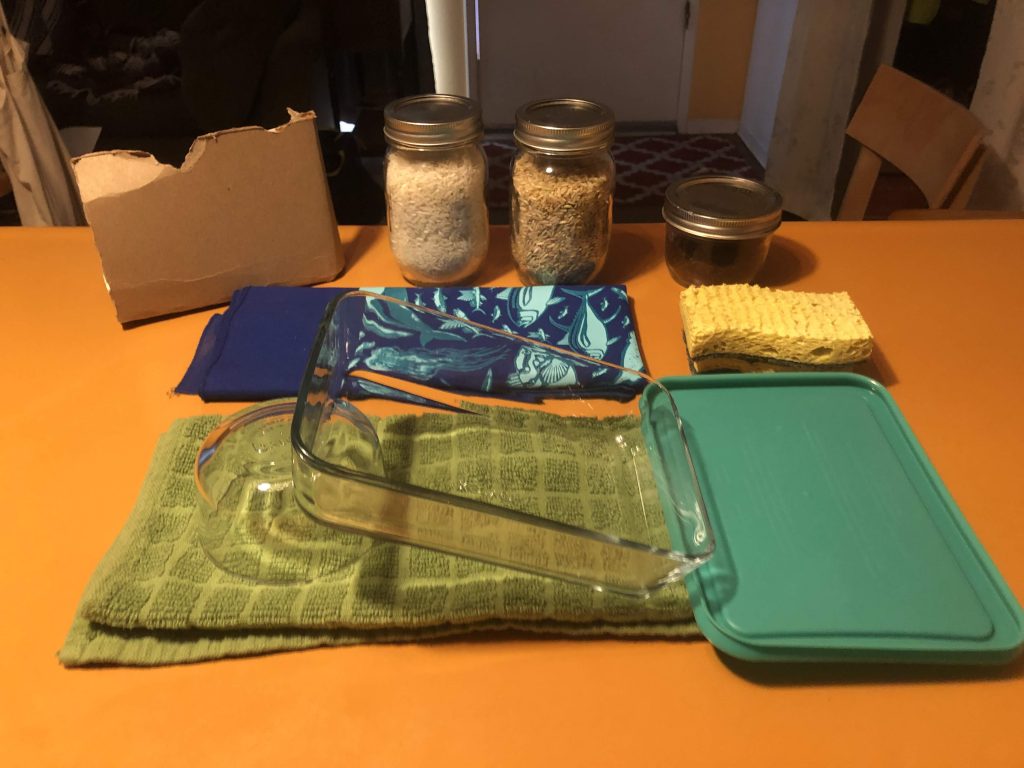
- Fill your dish with your “surface” – I’m starting with these sponges. Make sure it is filled at least up to the top of your dish.
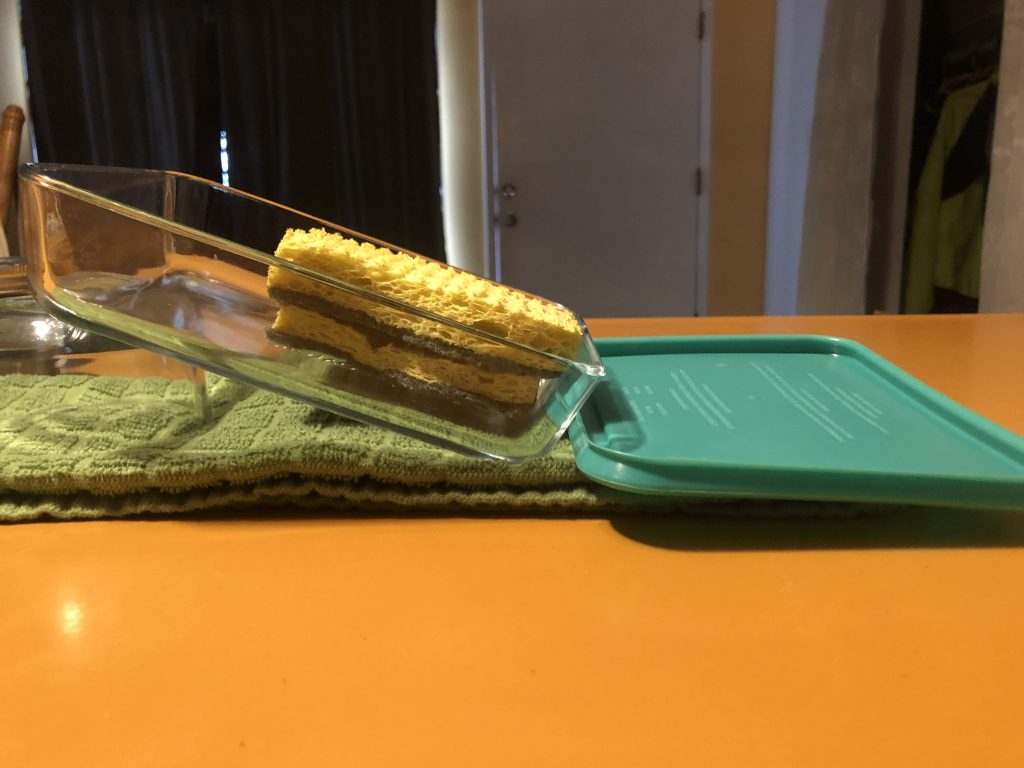
- Pour a cup* of water over your surface. Watch where the water goes. Did it all stay in the dish, or did any run off?
*The amount of water you pour can be changed, as long as you are consistent.
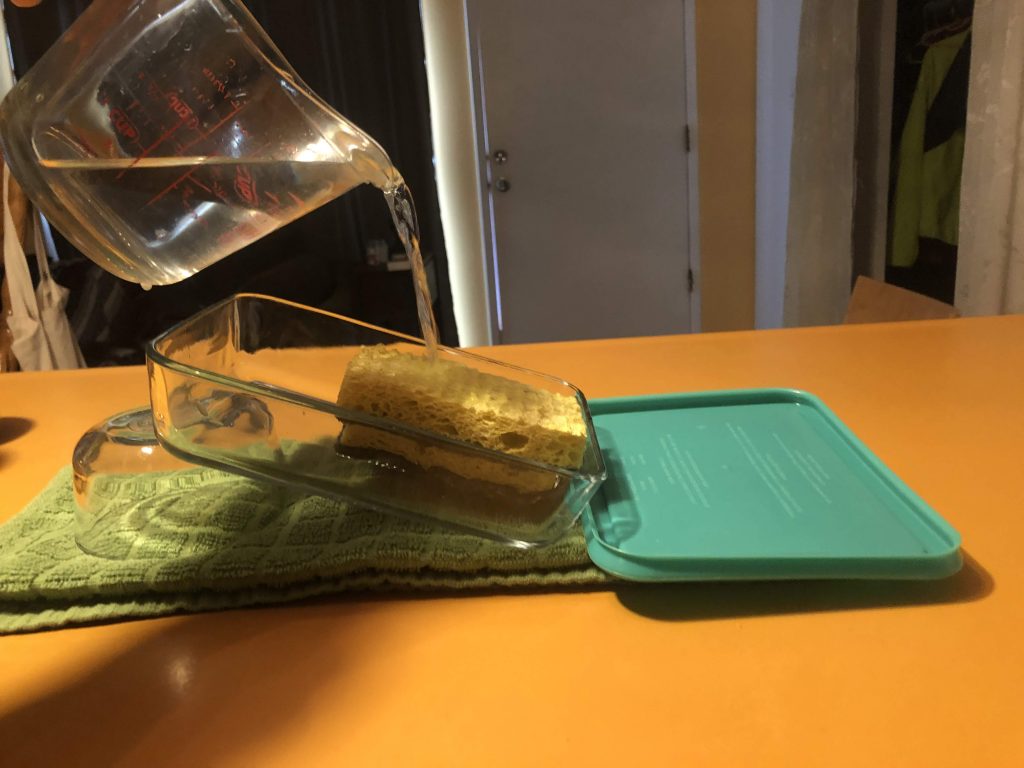
- Measure the amount of water that left the dish. This is your runoff. The water remaining in your dish is the infiltration.
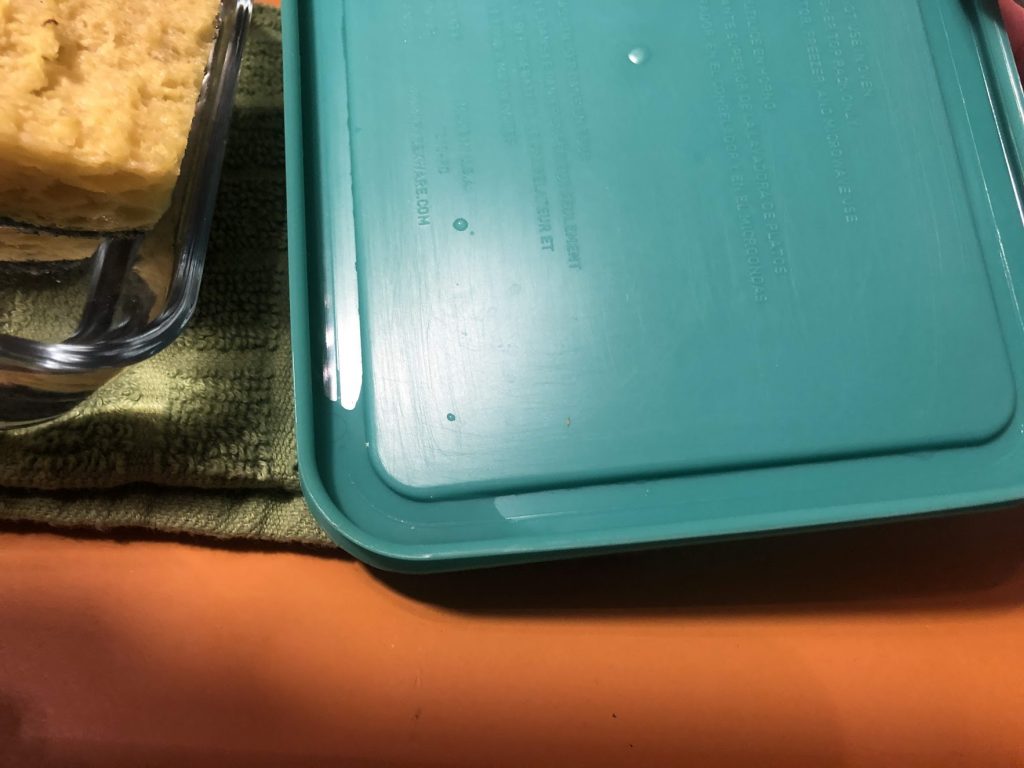
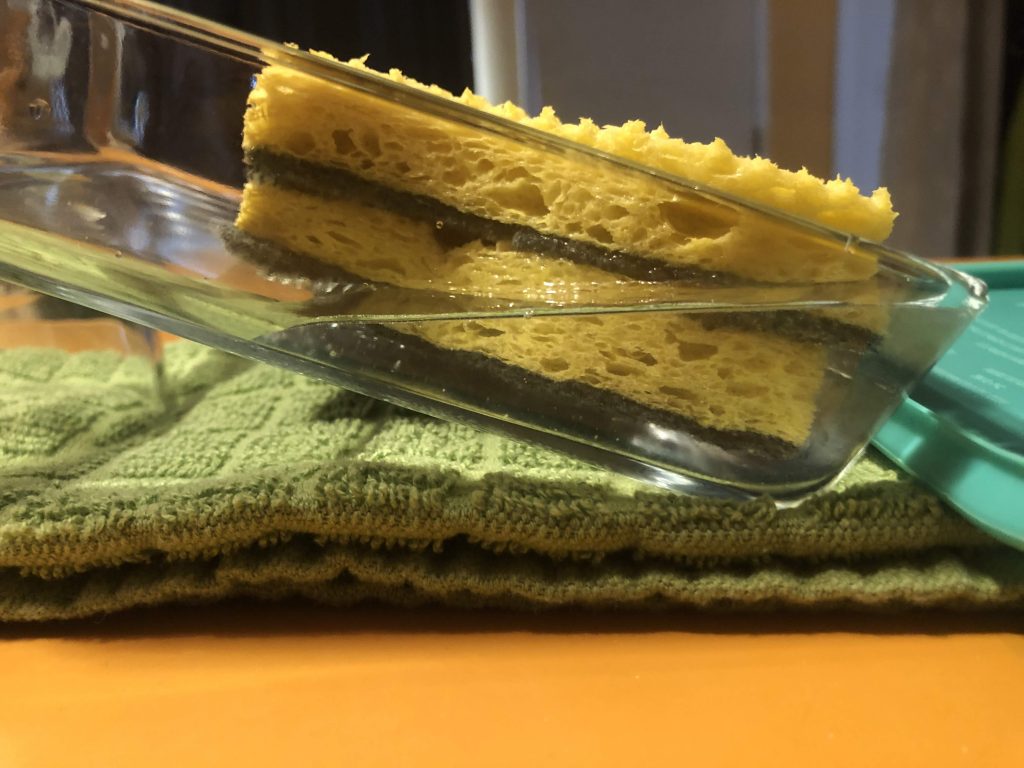
- Keep track of how much runoff comes off each surface. What does this surface remind you of in the real world?
- Bonus: Start the timer when you start pouring water on your surface, and stop when there is no observable water. Keep track of how fast water is running off or infiltrating for each surface material.
- Try again for all of your different surfaces!
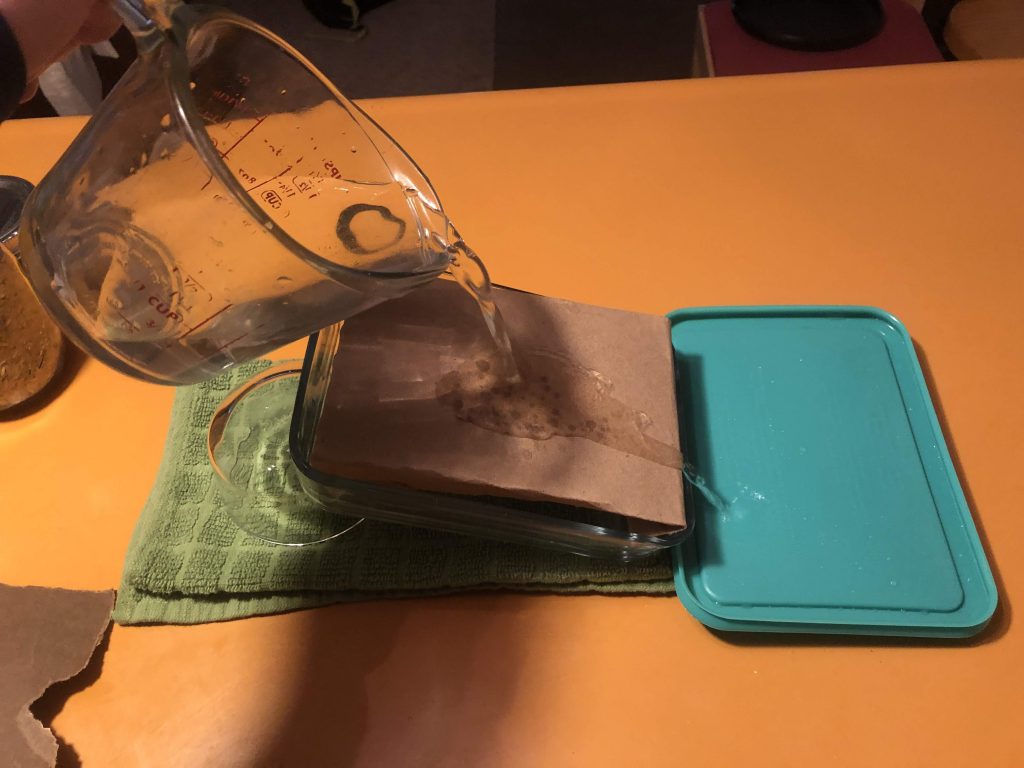
In forested and other natural environments, reducing runoff is very important. When it rains, some water can be absorbed in the soil and used by plant roots, some water lands on leaves and branches before evaporating, and very little water actually makes it directly into nearby streams, lakes or ponds. Too much runoff can lead to soil and plants being washed away, increased river flow rates that could potentially be damaging to animal species, and increased pollution in our waterways. When water runs over a surface, it picks up whatever it can carry. Often, in human-influenced environments, this can include pollution in the form of garbage, microplastics, and even dog poop! If forests are replaced with roads and other paved surfaces, runoff can move a lot of pollutants into storm drains and eventually Puget Sound. While we certainly need roads and other paved surfaces in our community, it’s important to recognize the usefulness of our green spaces as well, and work to preserve them to reduce runoff in our county.
Vocabulary
- Runoff: water that drains freely off of a surface
- Porous: having many pores so liquid and air can pass through
- Infiltration: the process by which water on the ground enters the soil
Keep learning!
Here are some adaptations to this activity for young scientists who enjoy an extra challenge:
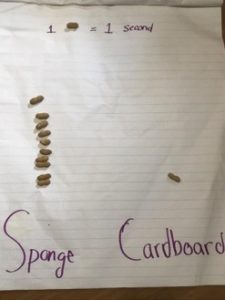
- Instead of clean water, use a mix of flour and water in this activity. Record your observations as the flour water moves over different surfaces.
-
- Can you make a claim to explain this phenomenon?
- What evidence do you have to support your claim?
- What reason can you state that might explain these ideas?
- Graph it! Use objects around your house to create a graph that represents the infiltration rates of different surfaces. Beans, pasta or pine cones can represent the seconds it takes to infiltrate, or soak in to the surface!
- Interested in more information about runoff in Puget Sound? Check out Puget Sound Starts Here, with everything from Classroom Tools to videos like this and this!
Sound GREEN (Global Rivers Environmental Education Network) is a watershed education program in Thurston County that educates, empowers and connects more than 60 teachers and thousands of students in watershed studies annually. Through South Sound GREEN, participants engage in science and engineering practices related to local environmental issues, primarily related to water quality in South Puget Sound. For more information, visit southsoundgreen.org.







































